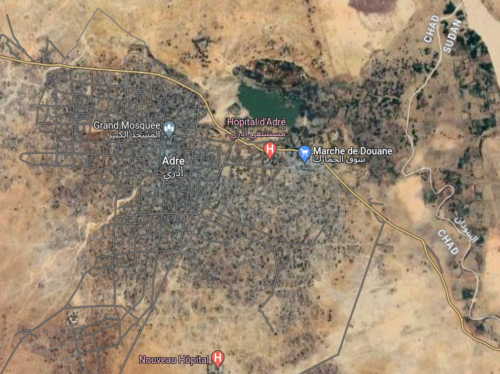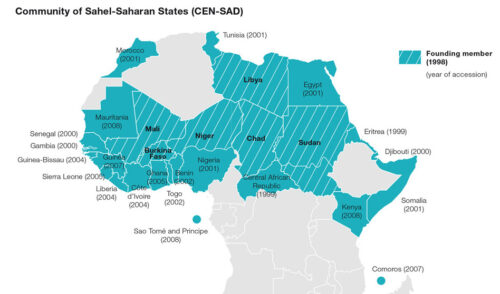I’ve previously discussed a global focus on Gaza relative to a lack of attention on violence elsewhere. It’s an issue that is having a direct and profound impact on upwards of 6 million displaced people around Sudan. This crisis in Africa, particularly highlighted in a stark new warning from the World Food Programme (WFP), appears to be so overlooked now that a reported 1.4 million people crossing the border to escape Sudan are on the brink of collapsed support systems.
In just the last six months of conflict in Sudan, as many refugees have fled into Chad as had crossed the border in the preceding 20 years starting from the outbreak of the Darfur crisis in 2003. This brings the total number of refugees in Chad to over a million, making the country host to one of the largest and fastest-growing refugee populations in the whole African continent.
[…]
Dwindling funding and soaring immense humanitarian needs, is forcing WFP into making brutal choices. In December, WFP will be forced to suspend assistance to internally displaced people and refugees from Nigeria, Central African Republic, and Cameroon due to insufficient funds. From January this suspension will be extended to 1.4 million people across Chad – including new arrivals from Sudan who will not receive food as they flee across the border.
Chad is one of the poorest countries in the world, and it’s been quietly facing millions of refugees who arrived in just the past few months to escape “ethnically motivated” violence against civilians.
The fighting between two rival military factions that had started in Khartoum in April rapidly spread to other parts of the country, including the western Darfur region where it reignited long-standing ethnic and inter-communal tensions. West Darfur State has become the epicentre of conflict in the region with reports of widespread violence against civilians.
The border town of Adre, Chad this year for one example reported a population of 40,000 people. In just three months after April it had to take in more than 200,000 refugees.

Notably, the level of terrorist violence in the region of Chad is at an unbelievable high, which the Wilson Center earlier this year attributed in some part to… divisive effects of social media platforms as well as the presence of Russia.
The Sahel now accounts for 43 percent of the world’s terrorism deaths—more than South Asia and the MENA region combined. That percentage is on the rise. […] So why is this region particularly vulnerable to terrorism? Many are quick to blame ethnic and religious conflict made more destructive by the growing availability of weapons from outside the region. But there are other contributing factors that are fueling deeper stressors and frustrations within and between communities. Weather extremes, unpredictable growing cycles, desertification, and diminishing arable land all contribute to the sense of declining economic opportunity that many feel—especially the region’s youth. Instead of using their authority to resolve disputes and build inter-communal understanding, many political leaders, armed with social media, appear all too ready to exploit these pressures for their own political gain. […] The Russian paramilitary organization Wagner Group is… suspected of operating—or soon to be—in Burkina Faso and Chad.
To put that in perspective, in fifteen years the latitude just south of the Sahara Desert has risen from barely any terrorist activity to the most in the world. That’s the kind of alarming spread happening without sufficient attention, fueling the humanitarian crises, which I suspect time will show was linked to Hamas’ invasion of Israel and terrorist attacks on civilians.
Think of this map as a large blue arrow pointing to the North-East:

Indeed, according to reports, Adam Barima was murdered in Sderot by Hamas as he was walking in the street. This innocent Masalit man had fled to Israel to escape genocide in Sudan.
And in a particularly shameless disinformation campaign, videos of violence in Sudan are being fraudulently relabeled as Gaza and spread by social media platforms.
The claim a video shows an Israeli bombing of Palestinian children gathered at a water tank in eastern Gaza is false. It shows footage of the Sudanese military bombing the paramilitary Rapid Support Forces at an airport fuel depot in the capital Khartoum, as reported by Al Jazeera Sudan on October 12.
Misleadingly circulating a video of violence in Sudan as purported evidence of Israel attacking Gaza not only fuels ignorance of genocide in The Sahel but also detracts attention from the genuine challenges facing the growing millions displaced around Sudan, diverting focus from crucial issues within the region… which further exacerbates tensions towards and in the Middle East.